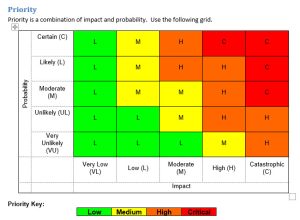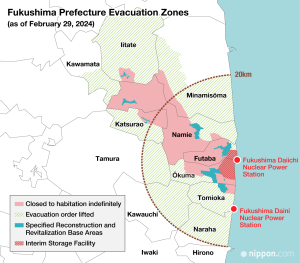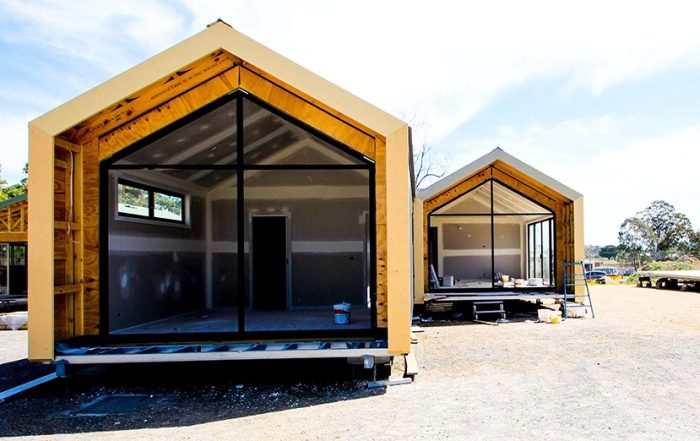The Nuclear Option
Working as a Project Manager for decades, I had to become at least competent in risk assessment. Put simply, there are two parts to a risk. The impact and the probability. Together, they determine the severity of a risk. I was thinking about this during all the discussion about Australia going nuclear. Typically, to do a risk assessment, we used a risk matrix like the one below.

If you look at the risk associated with a nuclear reactor, the impact of a failure has to be “Catastrophic”. If you look at the probability, it is somewhere between “Unlikely” and “Very Unlikely”. The risk, therefore, is high.
Compare this with a coal-fired power station. The impact of a failure would be low to moderate. The death rate is likely to be in single figures rather than dozens or hundreds. The damage might be significant in a very small radius, but not make vast areas unable to be inhabited or even visited for hundreds of years.
Given that the technology is well developed over more than a century, the probability is “Very Unlikely” for a major incident to occur. Given the likelihood of “Very Unlikely”, and an impact of “Low” or, at worst “, Moderate”, the risk with a coal-fired power station is “Low”.

You don’t need a risk matrix to instinctively know that a nuclear power station’s risk is higher than a low-risk coal-fired power station. Fukushima still has an exclusion zone stretching over 20k from the site.
Try this test. Sydney has a vacant power station at White Bay. It is only about two or three kilometres from the CBD. If nuclear is safe, we could put a nuclear plant on the old site. It has water from the harbour, and there is no need for long transmission lines from sites hundreds of kilometres away. Does anyone support or even dare to suggest this? Before anyone promotes nuclear energy, they should take the “White Bay Test.”
The next roadblock for nuclear power is to clear the state legislation that bans nuclear power. What State Government in its right mind is going to revoke nuclear bans and expect to get elected again? There would have to be Federal legislation to overrule the States, and that will be buried for decades in High Court appeals.
While on legislation, which State will pass legislation to approve a waste storage site? Our current nuclear medicine facility at Lucas Heights near Sydney must store its waste because nobody will approve a facility elsewhere.
We come to the build. The Liberal Party say it will cost $630b and the Government will pay. There are 15.5 million taxpayers in Australia, so we will pay around $41,000 each to build the plants. That is without a cost overrun, which seems inevitable given the record of previous infrastructure. How long does it take to recover the tax you will pay with savings in your electricity bill?
This leads on to another point. If the government has to build them, what does the private sector think? Why do they not think it is a profitable venture that they would fund and operate? The big energy companies have done their homework looking at this, and said, ‘Nah. No money in it.”
The timeframe for completion is 2036 to 2050, according to the Liberals. The CSIRO says a minimum of 15 years is needed to build a reactor, so the Liberals have to get into power, which looks less likely before 2028, work through all the legal challenges, and start building. Oh, I forgot. We have no experience in Australia in building reactors, so what could possibly go wrong?
Assume we get started by mid-2030s and everything goes to plan. The first reactors will come onto the grid around 2050. The opposition says they will last 80 years. Now, reactors work using nuclear fission. It is the splitting of atoms that releases heat and leaves radioactive residue. On the horizon is nuclear fusion, which involves joining two atoms to provide heat and leaves no radioactive residue. All that is left is water.
The technology is advancing, and several fusion pilot plants are in development. The US Department of Energy selected eight companies in 2023 to develop nuclear fusion plants in the next 5 to 10 years. Tomahawk Energy is building a pilot plant in Oxford, England, to demonstrate the capability of delivering electricity into the grid in the 2030s. They aim to deploy 500-megawatt commercial plants globally. These are just a few of the projects currently running.
As we get our nuclear plants into the grid with a lifespan of 80 years, technological advances will make them obsolete. We might as well start building steam-powered cars today. Maybe hand-cranked washing machines.
Let us look at what technology might look like in 2050. Batteries continue to fall in price, and by 2050, they will probably be comparable to solar panels in the time it takes to recover the initial outlay. The efficiency of solar panels will improve. Technology such as solar collectors integrated with roofing materials will probably be available. Perhaps even solar collectors as part of the road surface. We are only at the start of the technology that uses tides to generate electricity. As water rushes into a lake or river during the rising tide, it turns a wheel that drives a generator. As it rushes out, the wheel spins the other way, generating more electricity. It takes the hydroelectric technology to another level. Wind might not blow, and sun might not shine, but the tides don’t change. Wave motion is another emerging technology.
As renewable technology improves, there is less need for baseload power. At some point, that need will go away. If we build nuclear plants that will still be here a hundred years from now, what are the chances they will be needed? I would expect zero.
It is hard to find a benefit for nuclear that stands up to scrutiny. If we trust in the best-case scenario painted by Peter Dutton, we will build an albatross for our children and future generations. Nuclear fails on a risk analysis, technological assessment, financial analysis, construction parameters and political reality.
Best take the “White Bay Test” and move on.






